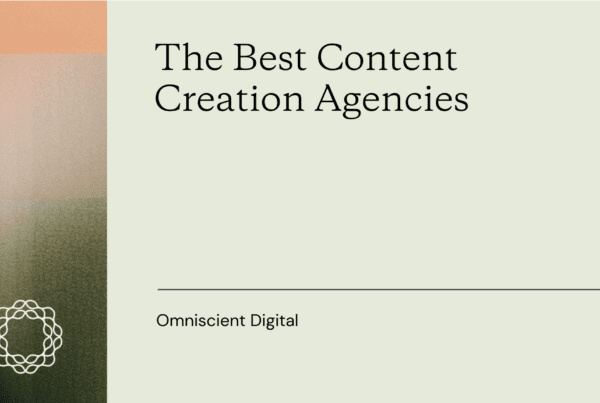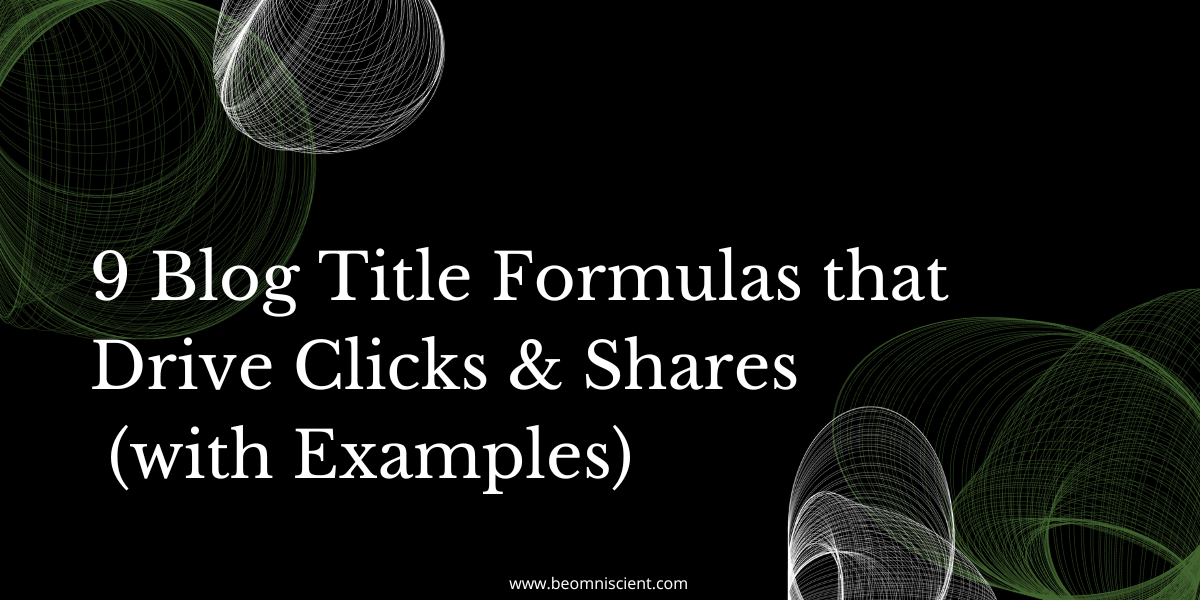
“On the average, five times as many people read the headline as read the body copy. When you have written your headline, you have spent eighty cents out of your dollar.” – David Ogilvy
Writing a good blog title is hard.
But it may be the make-or-break factor that drives success in content marketing, at least on the margins.
Sure, the substance of the article has to be there.
But if we can take any cues from content sites like Buzzfeed, Upworthy, or any modern media publication, it’s clear that crafting a catchy and click-inducing headline is super impactful.
In fact, I learned that for every piece of content Upworthy published, writers had to write 25 headline variations before choosing the winner.
While you may not need to go to the same level as Upworthy, it’s worth studying what works to get clicks on social, search engines, and other channels.
In this post, we’re going to take a look at what makes for a great blog title, some formulas you can use to write great headlines every time, and some examples of successful headlines from well-known brands.
By the end of this post, you’ll have all the tools you need to write catchy, shareable blog titles that will help your content get noticed.
What Makes for a Great Blog Title?
Many factors go into making a great blog title.
Above all else, your title needs to be clear, concise, and easy to read.
It should accurately reflect the subject matter of your article while also piquing readers’ interest so that they want to click through to read more.
In addition, your title should be keyword-rich so that it stands a better chance of ranking in search engine results pages (SERPs).
While there are no steadfast rules when it comes to writing headlines, there are certain elements that tend to make for more successful headlines than others. These include:
- Numbers or odd digits (e.g., “5 Amazing Benefits of Lemon Water” or “The 3 Types of People Who Will Love Your Brand”)
- Curiosity-provoking words or phrases (e.g., “You Won’t Believe What Happened Next” or “This One Simple Trick”)
- Questions (e.g., “Are You Making These Common Writing Mistakes?”)
- Negative superlatives (e.g., “Worst Foods for Weight Loss” or “Never Do This If You Want to Get Ahead”)
- How-to’s (e.g., “How to Make Money While You Sleep” or “How to Optimize Your Facebook Ads for Maximum ROI”)
However, note that there’s no single, universal way to write catchy blog titles.
Things are constantly evolving and you have to take into account the specific context of your audience (targeting startup entrepreneurs or small business owners is probably different than the general public, for example) and your goals (want to drive social shares? That’s different from increasing SERP click-through-rates).
That said, there are some tried-and-true formats that tend to work well, which I’ll cover below.
9 Formulas for Writing Attention-Grabbing Blog Headlines (with Examples)
In addition to using some of the elements listed above, there are also certain formulas you can use to write attention-grabbing headlines every time. These formulas are:
1. Newsworthy headlines
These headlines trigger a novelty factor and cause someone to click because the fact or statement in the headline is timely.
Often, these are baked in research. You see this type of thing all the time in health publications like Men’s Health, or blogs from companies like Henry Meds. “Science says _____.” “New Study Shows That [blank] Causes Cancer.”

They can also simply be news headlines, which you often see in mainstream publications like The New York Times, CNN, or Fox News.

2. Legacy headlines
Also known as ‘how I did it’ headlines, these types of headlines share your story and experience in order to establish yourself as an expert in your field while also providing value to your readers. For example: “How I Grew My Twitter Following from 0 to 10K in 2 Months.”
I love these headlines and I hope to see more of them from content marketers. My co-founder Allie always says “how we > how to” when it comes to content.
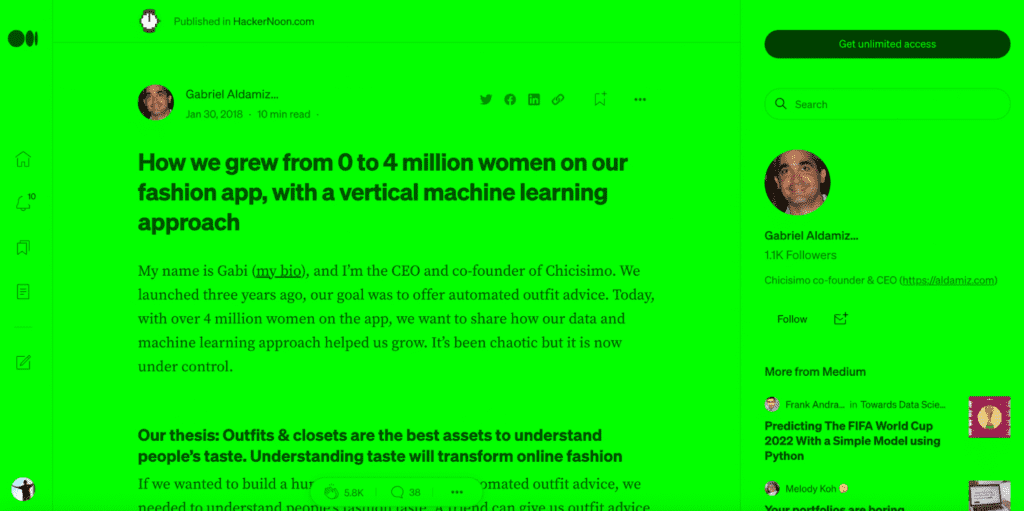
Experience is an expensive commodity, and it’s hard to replace or replicate as a content marketer. If you can write this type of content, do so.
I wrote a lot of this at HubSpot and about my experience in growth and experimentation. Check out this example from Convert:

3. Newsjack headlines
These headlines piggyback off current events or news stories in order to acquire some quick traffic by riding on the coattails of whatever is trending at the moment.
For example: “[Blank] Just Passed Away; Here’s What He Taught Us about Life.”

You see this template used often in marketing blog posts, especially around culturally relevant themes like TV shows or memes.
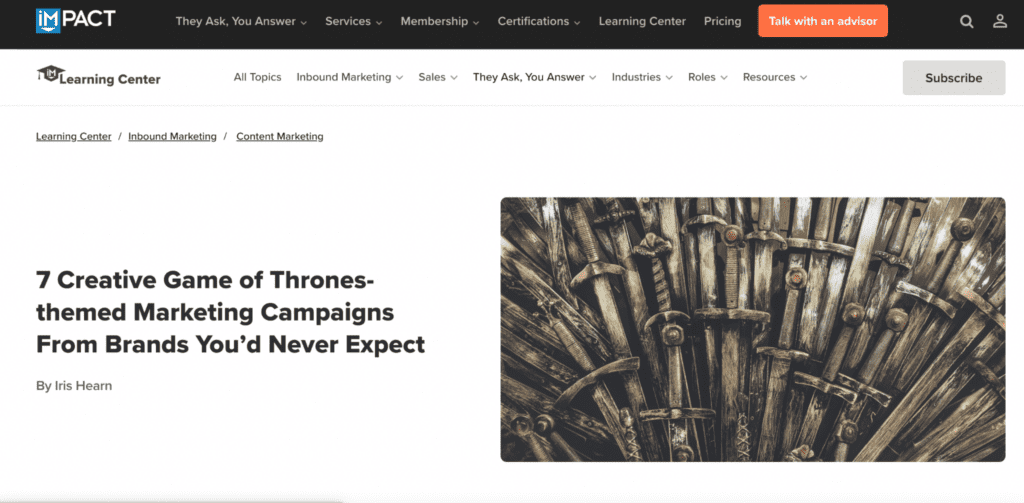
Personally, I’m not a huge fan of this type of content, but it can be used effectively as a small percentage of your portfolio to drive some quick social shares.
4. “How to” or “Step-by-step” titles
How to headlines are some of the most common blog title examples you see in the content marketing and SEO space. These are basically tutorials that provide a clear and concise guide on how to do something, such as “How to Write a Winning Blog Post” or “Step-by-Step Guide to Building a Successful Blog”.
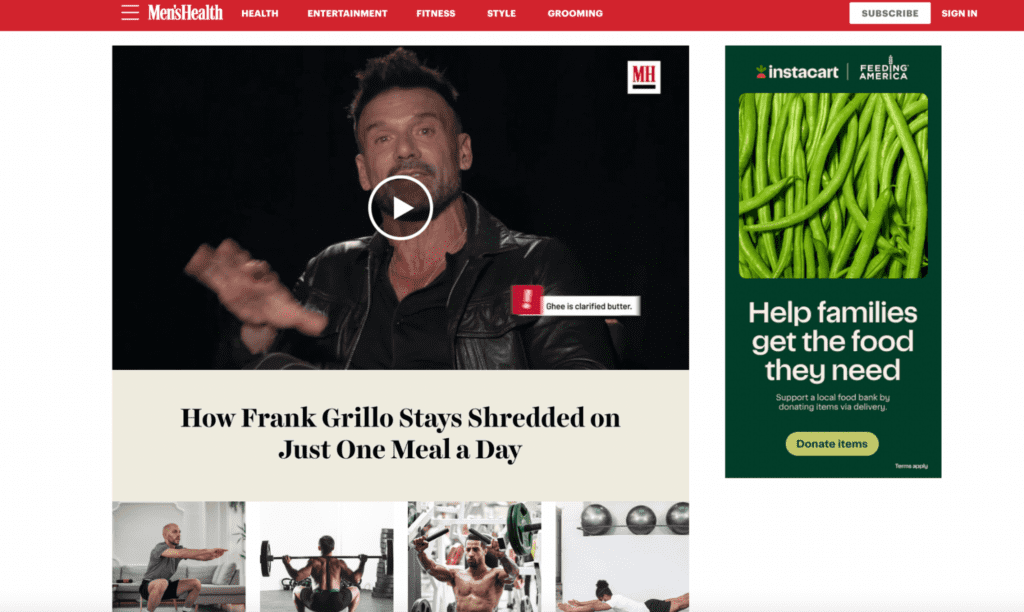
This is probably one of the most commonly used templates for SEO-driven content:
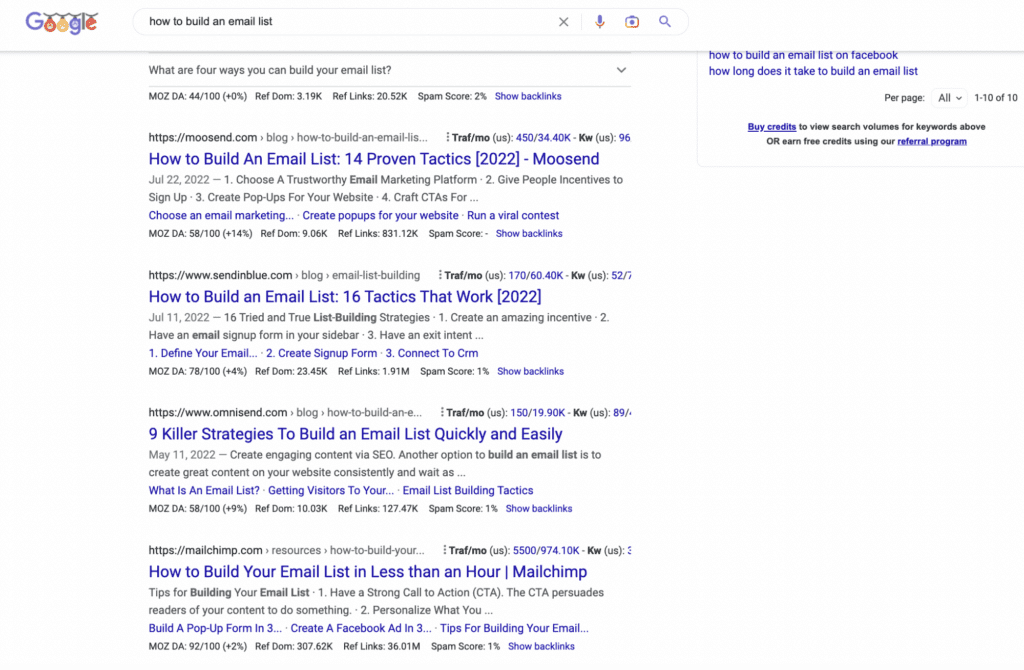
These are pretty straightforward, but they’re often the best blog titles for your purpose, as long as you can back up the title with a great in-depth post.
This is probably the style I use most often, as I often write technical and in-depth tutorials on content related topics like keyword research.
5. List titles
Ahhh the classic listicle!
It’s not Paul Graham’s favorite type of blog content, but the list post is here to stay.
This formula will use numbers or bullet points to highlight key points or ideas, such as “10 Tips for Boosting Your Blog Traffic” or “5 Essential Tools for Every Blogger.”
List posts are often used for product lists as well as roundup posts.

They say bigger numbers make for more social shares, but who knows?
6. Question titles
This headline formula poses a question that the blog post will answer, such as “What Are the Top Trends in Blogging for 2021?” or “How Do You Choose the Right Blogging Platform?”
These are often provocative in nature. Life pro tip: if it’s a provocative question headline, the answer is always no.
E.g. “Do click-bait headlines always end with a question mark?”
(The answer may surprise you!)
Snark aside, question headlines are very common and often lead to great content. Here’s an example from The Atlantic:

But as we mentioned above, question headlines don’t need to be always provocative. This post about the correlation between DHT and male hair loss by the brand Hims is a good example of a blog post with a question headline that is not provocative but rather answers a very common question among the brand’s audience.

7. Curiosity gap titles
The curiosity gap title is a generalized term for, essentially, clickbait.
These types of headlines create a sense of curiosity or mystery by leaving out important information or using a provocative or intriguing phrase, such as “The Surprising Secret to Successful Blogging” or “The One Thing Every Blogger Needs to Know”.

Curiosity gaps are often similar to “clickbait headlines,” made famous by Buzzfeed and Upworthy. Now, however, everyone uses them (including, and perhaps especially, The New York Times):

“Benefit” titles, which highlight the benefits or advantages of reading the blog post, such as “Why You Need to Start a Blog Today” or “5 Ways Blogging Can Boost Your Career”.
8. Declarative headlines
These headlines make a strong, often contrariant declaration.
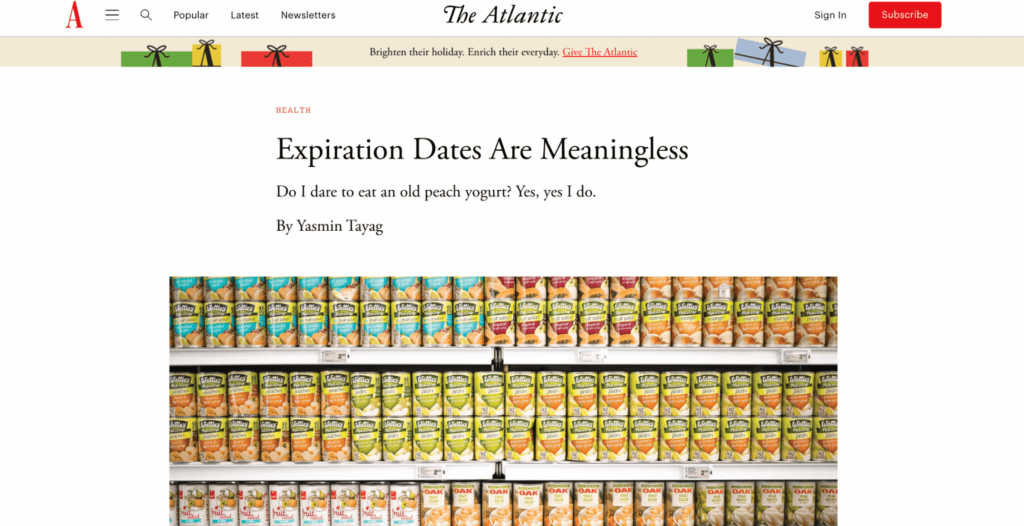
We use this style often when creating thought leadership content, especially to be spread on social media (Twitter and LinkedIn particularly):
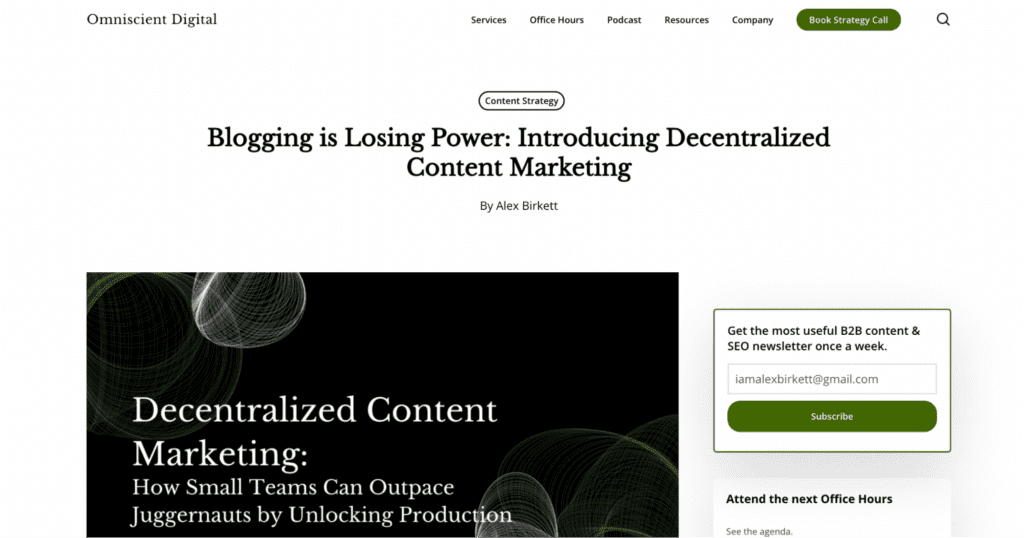
I also think these are underrated, especially if your take is truly substantive and potentially inflammatory.
You have to look at common shibboleths in your space and take an alternative or contrarian side of the argument.
If your audience, for example, is a bunch of hustle culture entrepreneurs, a take like “hard work is overrated” could provide some intrigue.
9. SEO headlines
Search engines are tricky because you have to match the intent of the target keyword while simultaneously creating a curiosity gap.
If you’re targeting the keyword “customer satisfaction” for example, it should embody the search intent of an informational post. It could be “Customer Satisfaction: The Ultimate Guide.”
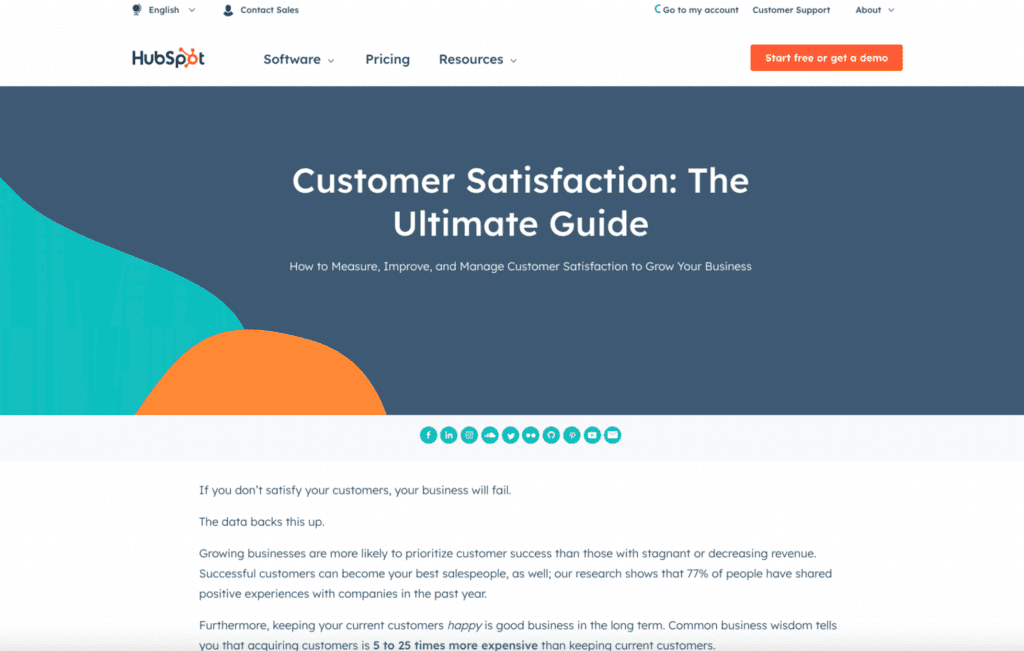
All of the above examples could potentially work for SEO blog titles, it just depends on the search intent of the keyword you’re targeting.
Wrap up on blog titles
Remember, a great headline is key to the success of a great blog post. It’s the tax you have to pay to get someone to read your content in the first place.
By using some of the elements and formulas outlined above, you can write attention-grabbing headlines that will help your content get noticed and drive organic traffic. These blog title ideas also apply to other media formats like YouTube, your podcast, or infographics.
Of course, this is part art and part science. Even with these formulas, nothing beats practice and a little stylistic flair. You also have to keep your target audience in mind when you craft these.
There are tools that help you generate blog ideas like HubSpot’s blog title generator. There are also headline analyzer tools you can use to see if your title is good, but I find personal judgment and experimentation to be more effective.
So the best thing you can do is take these as starting points, learn from others (just ask yourself: why did I click this article), and practice by writing a lot of blog post titles yourself.


